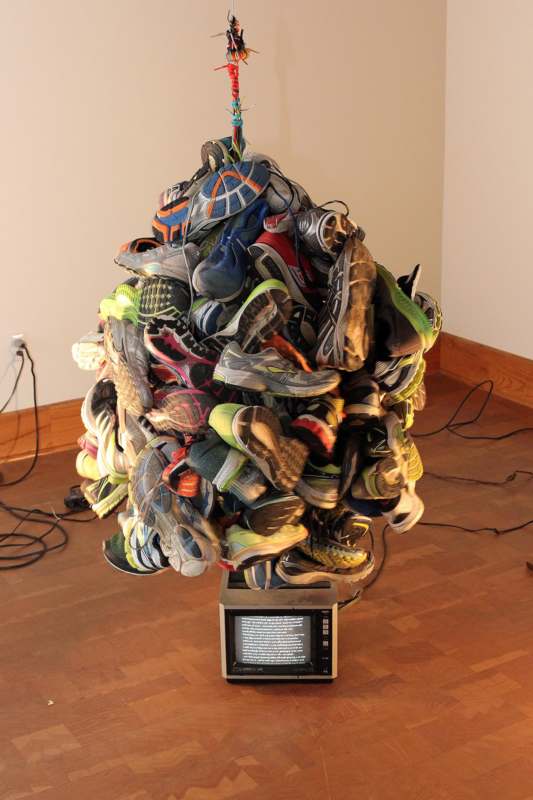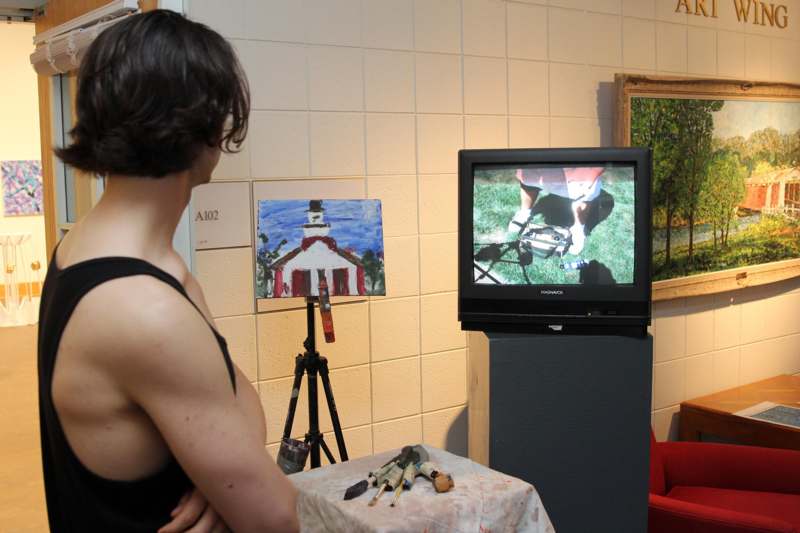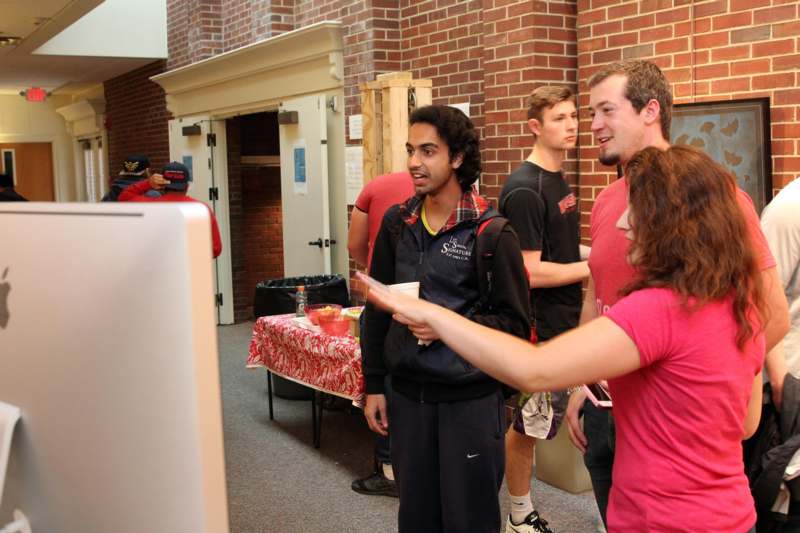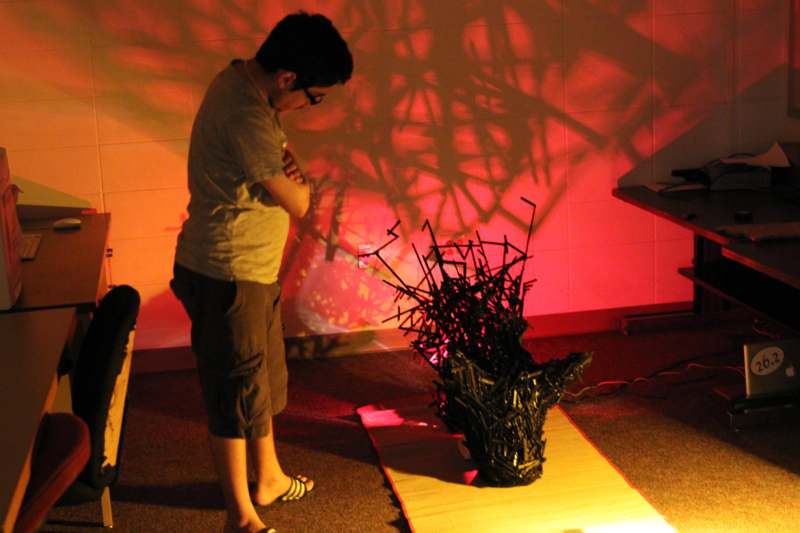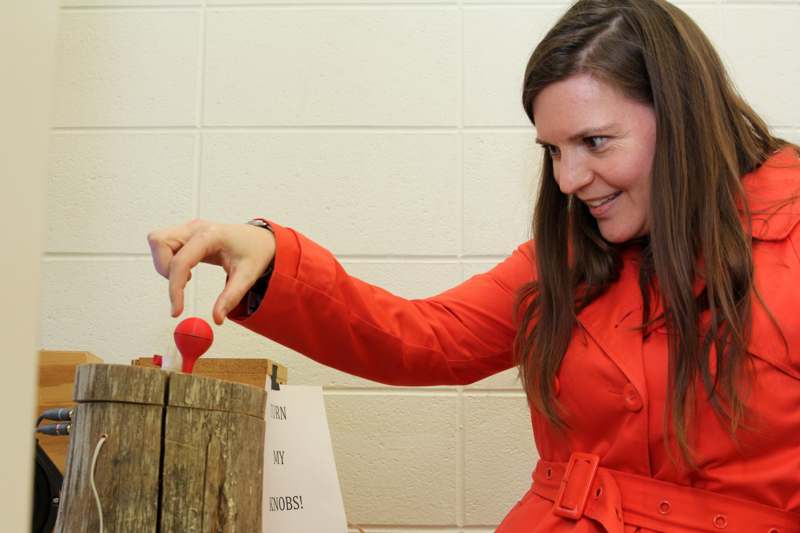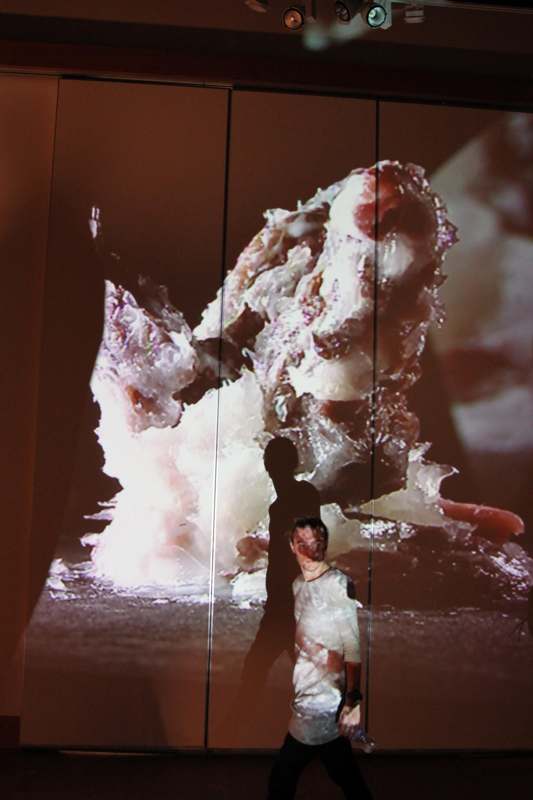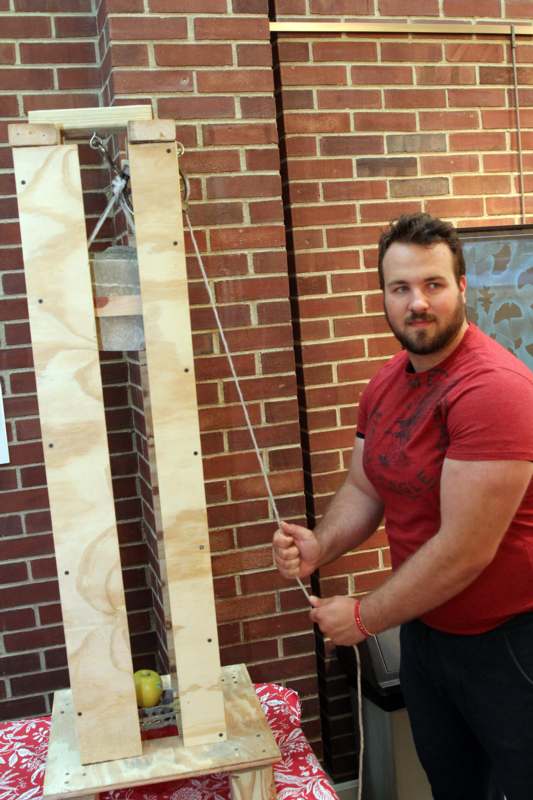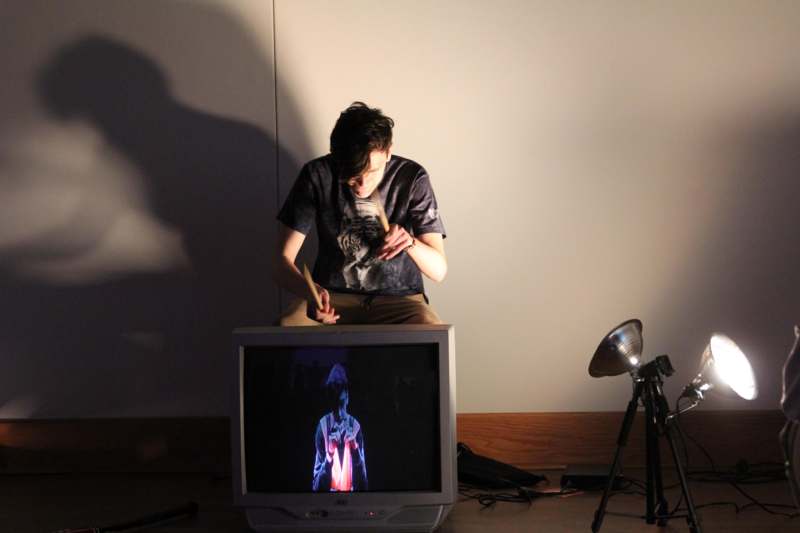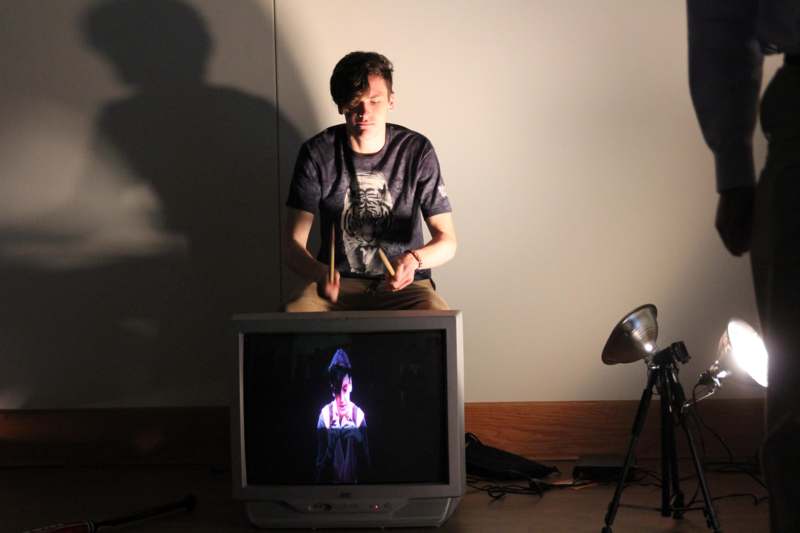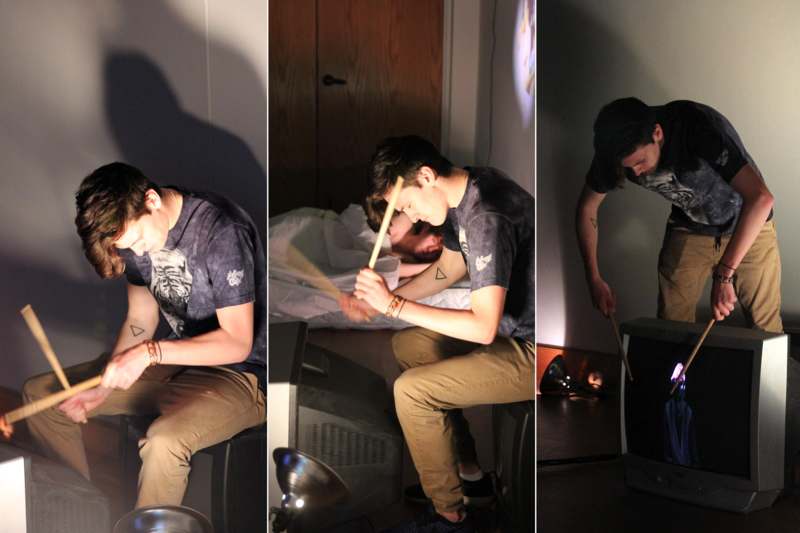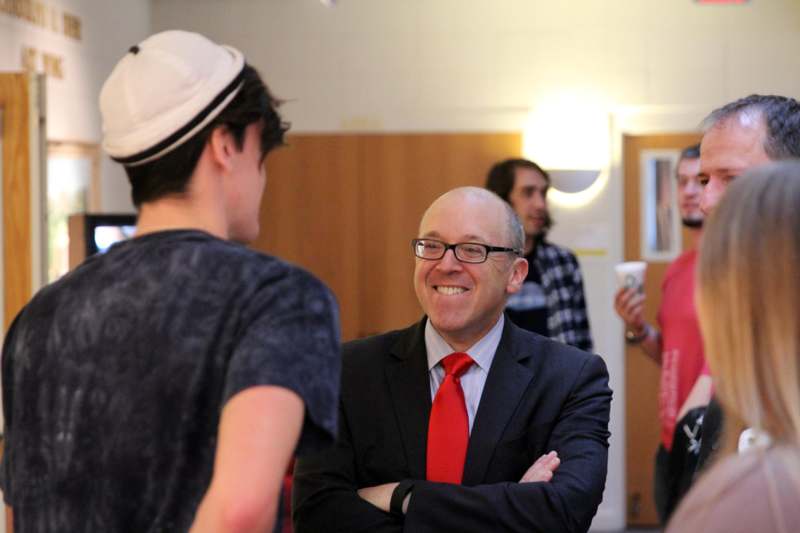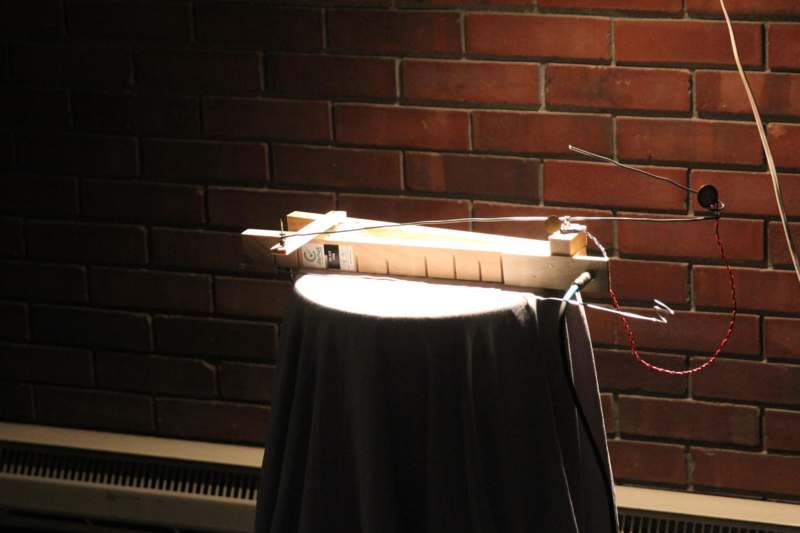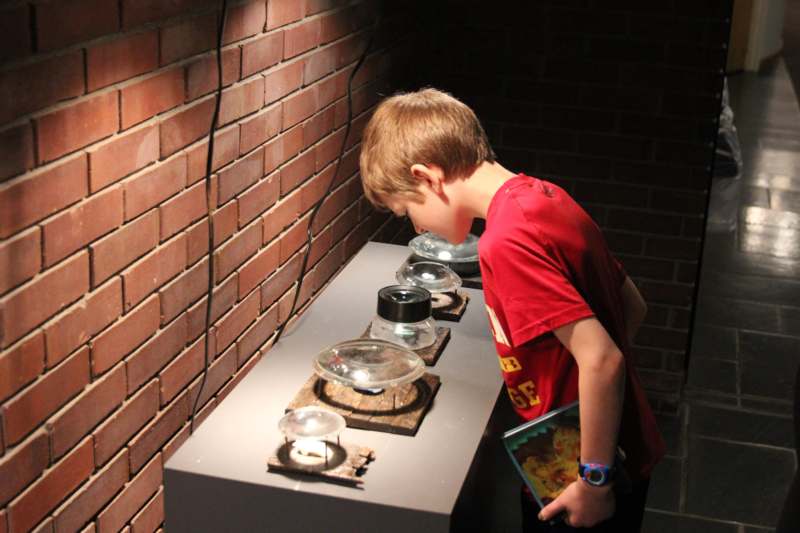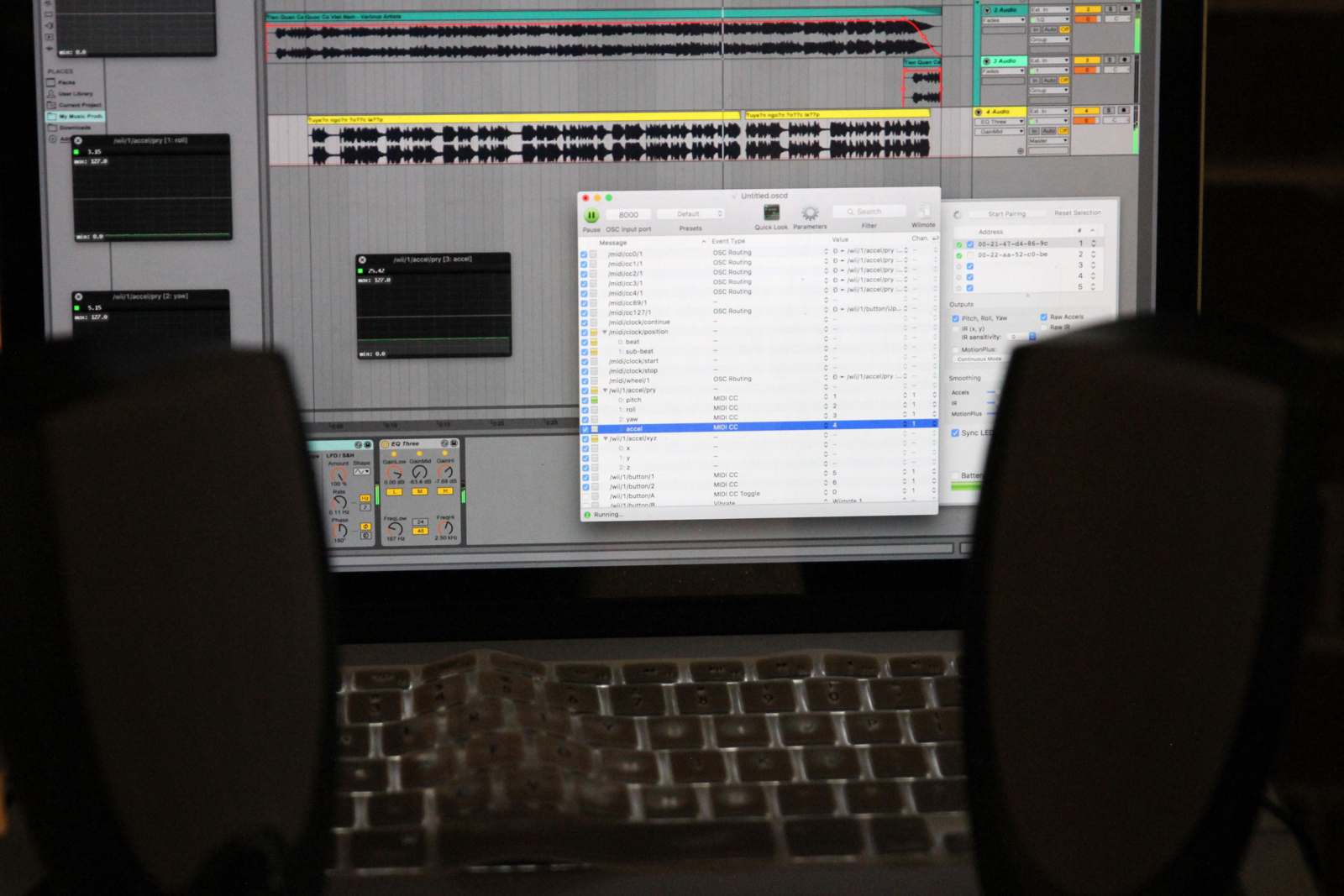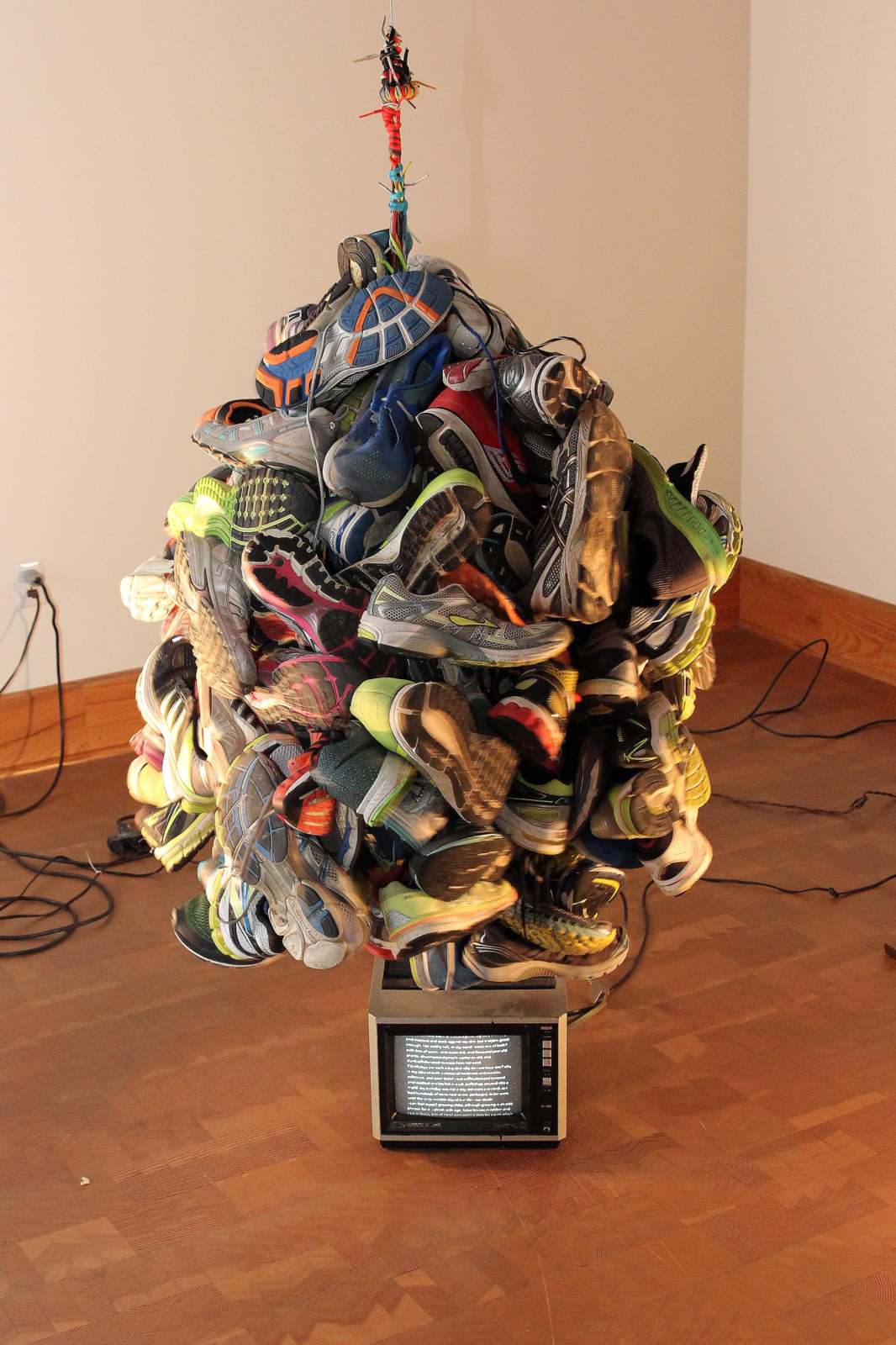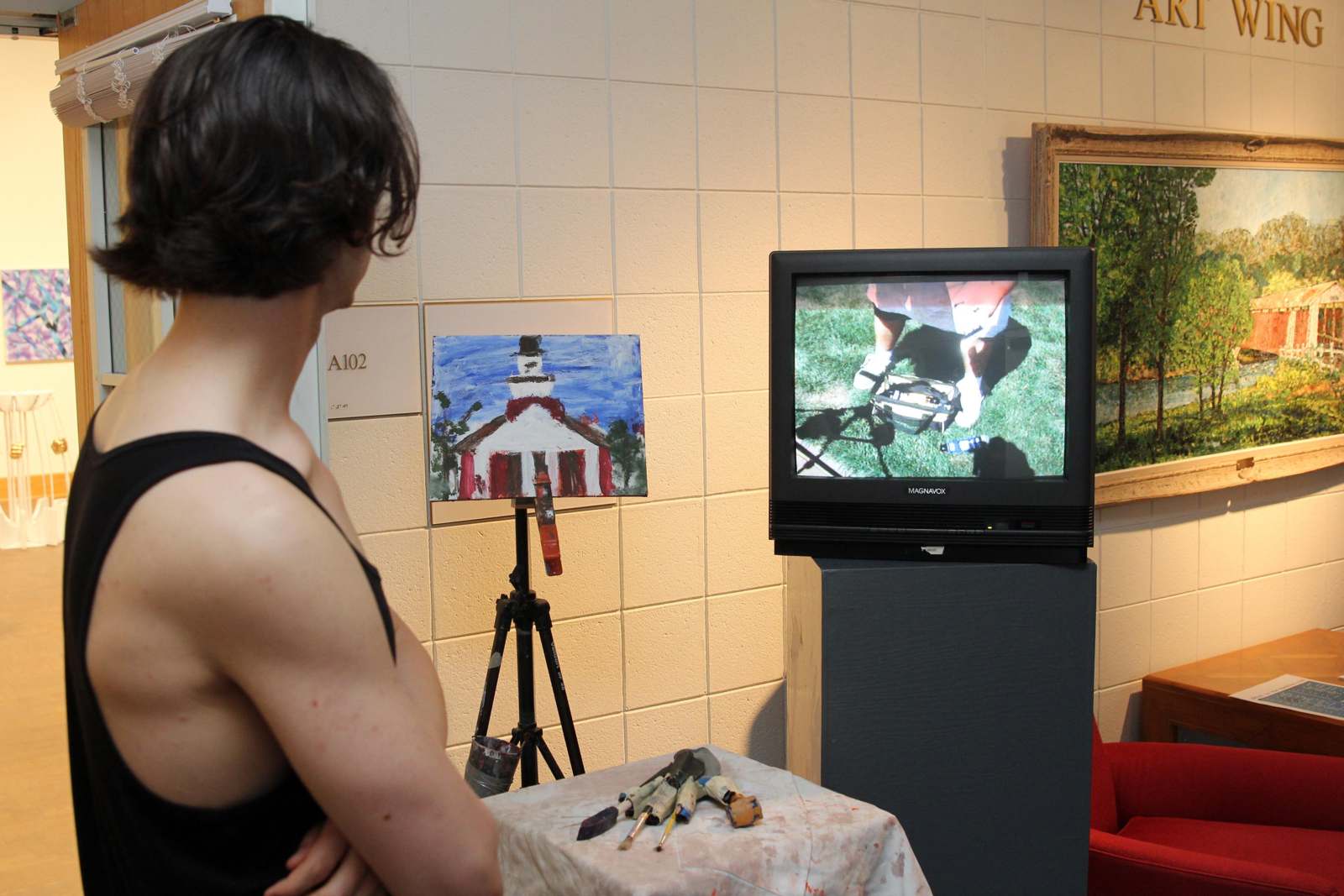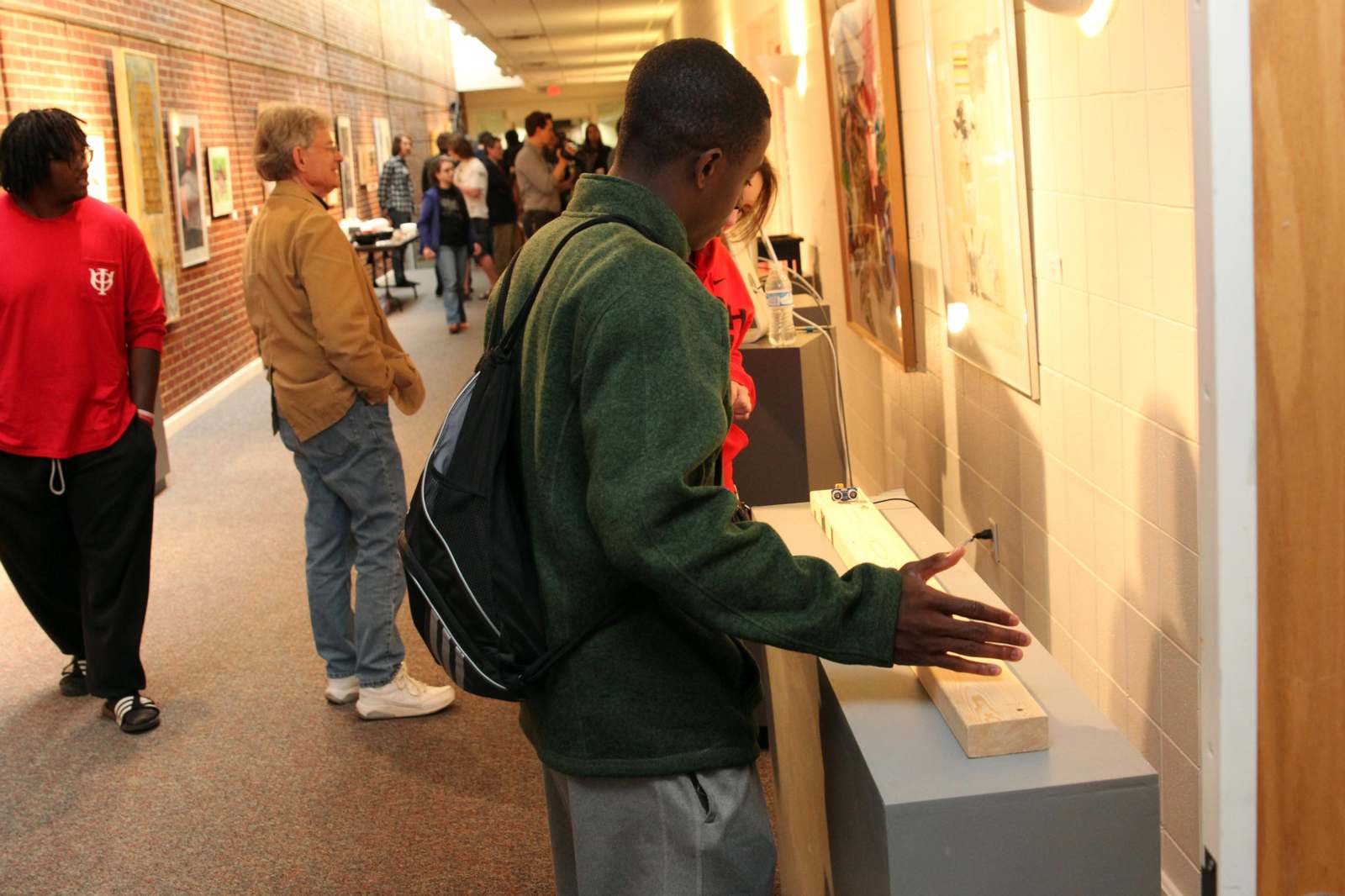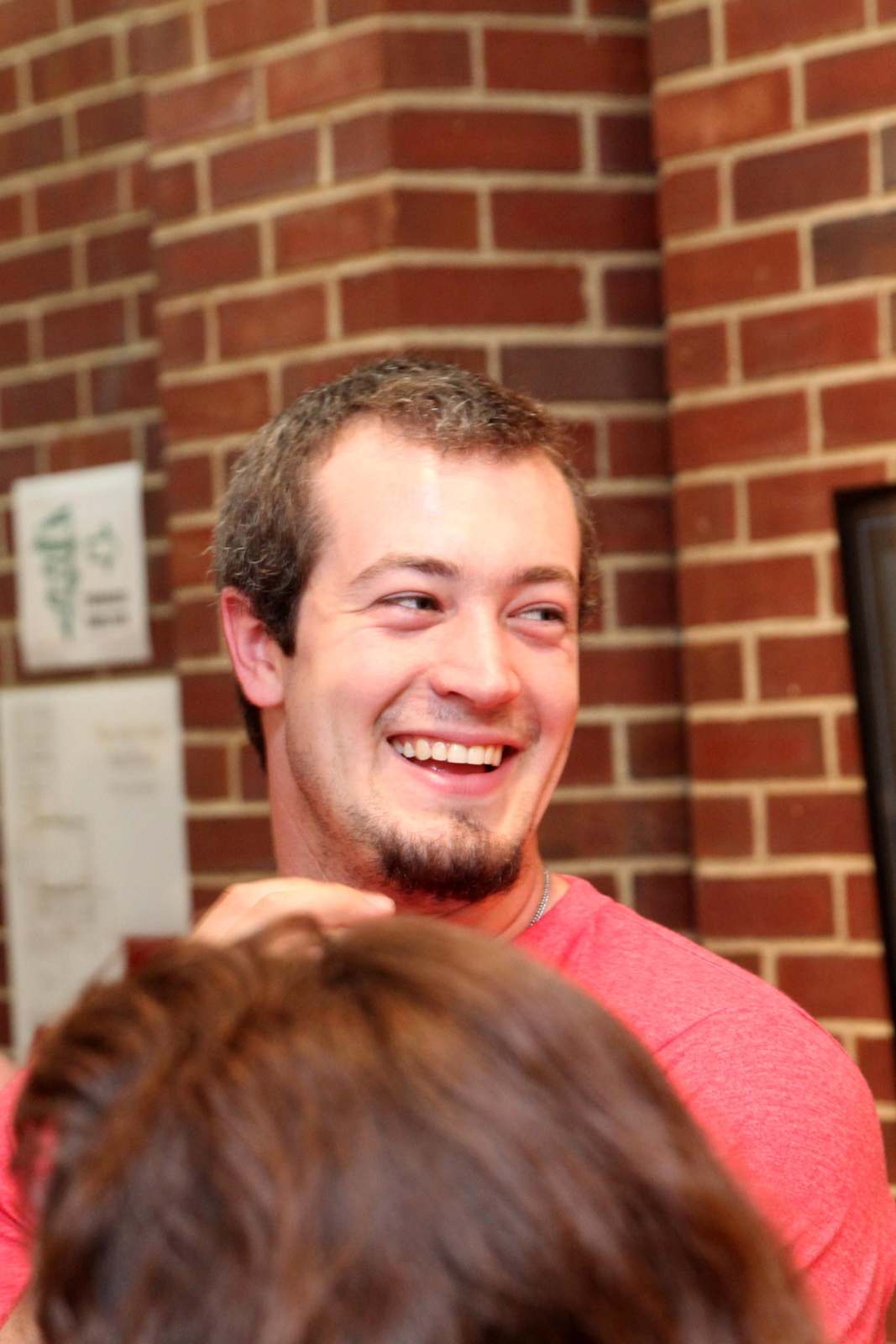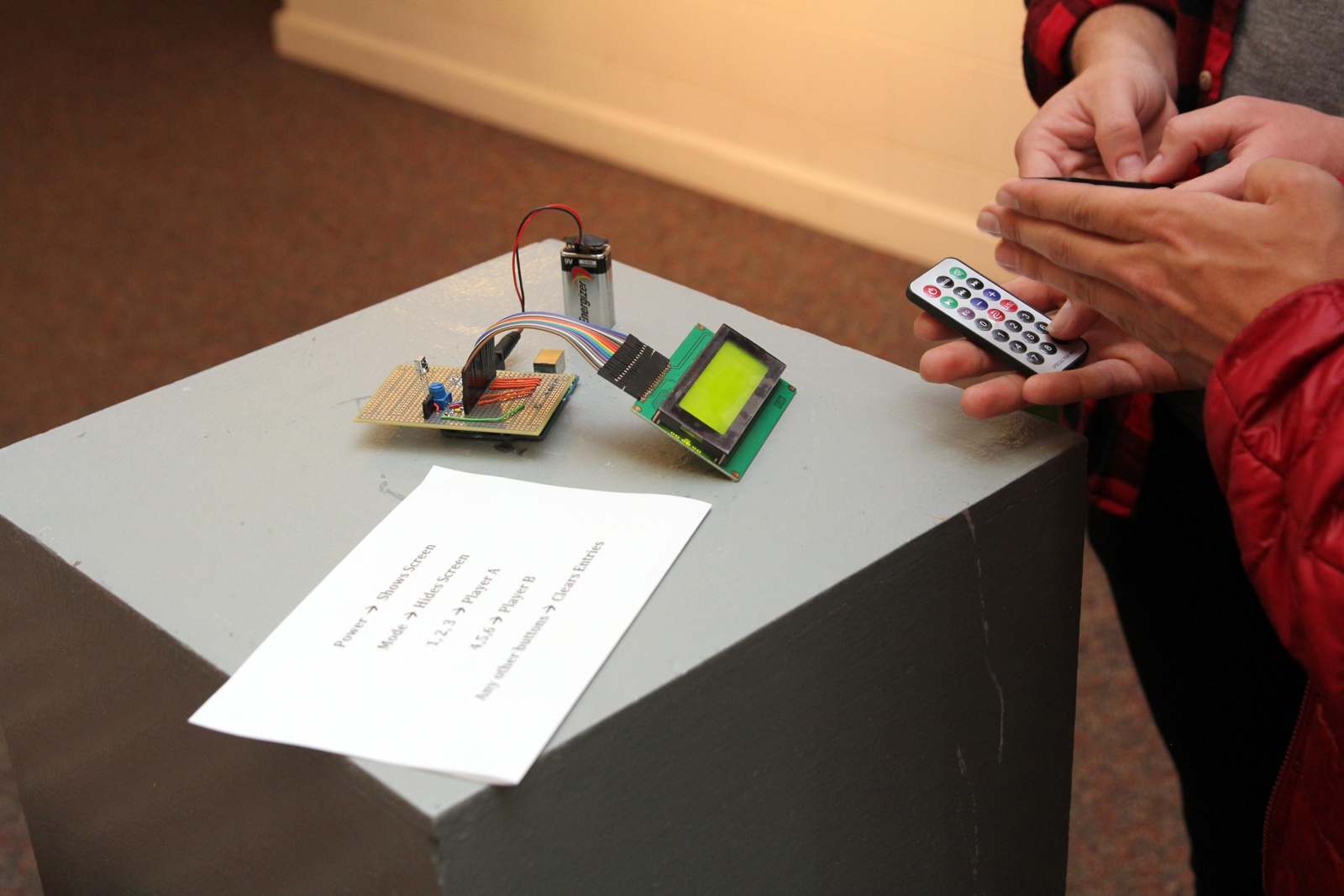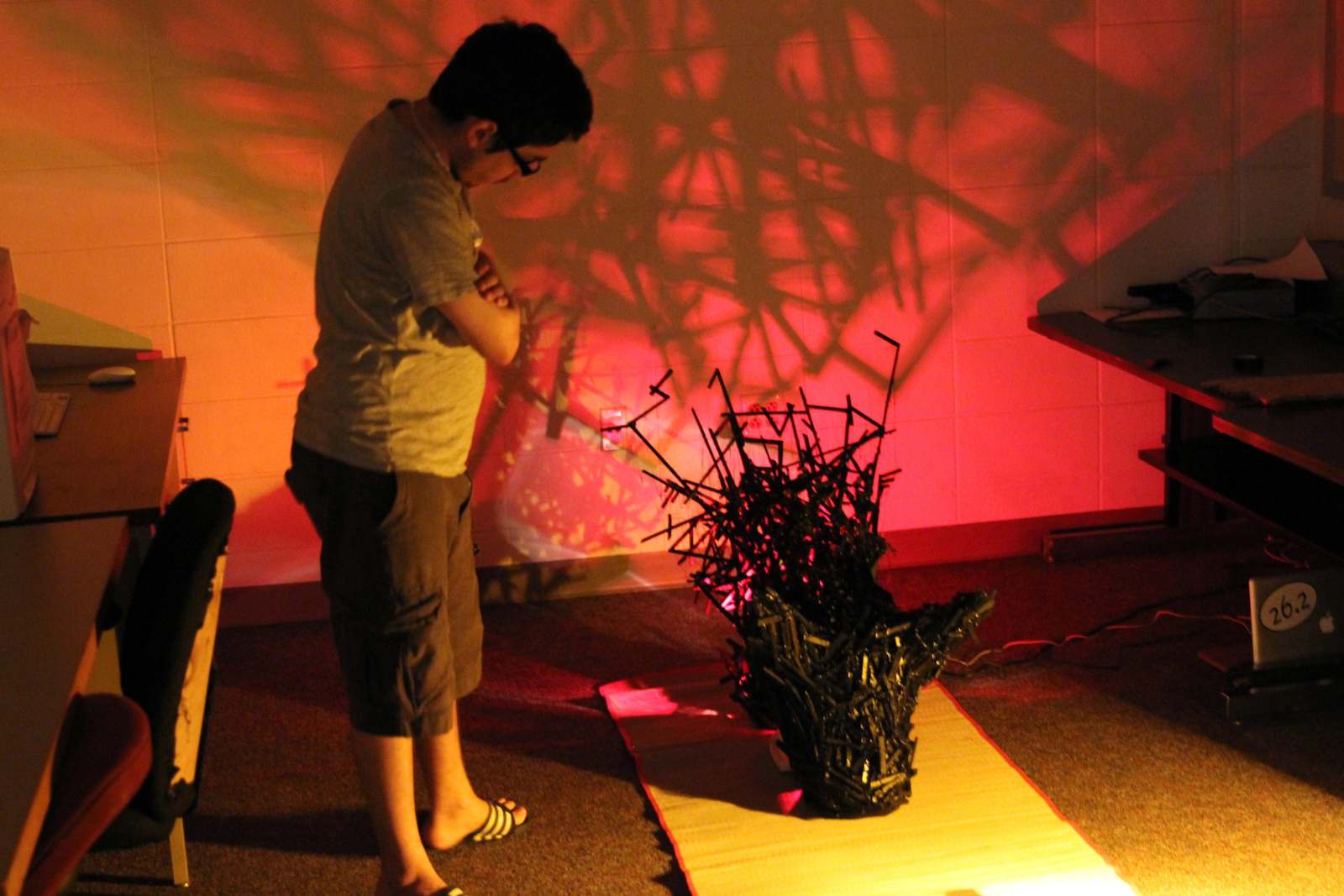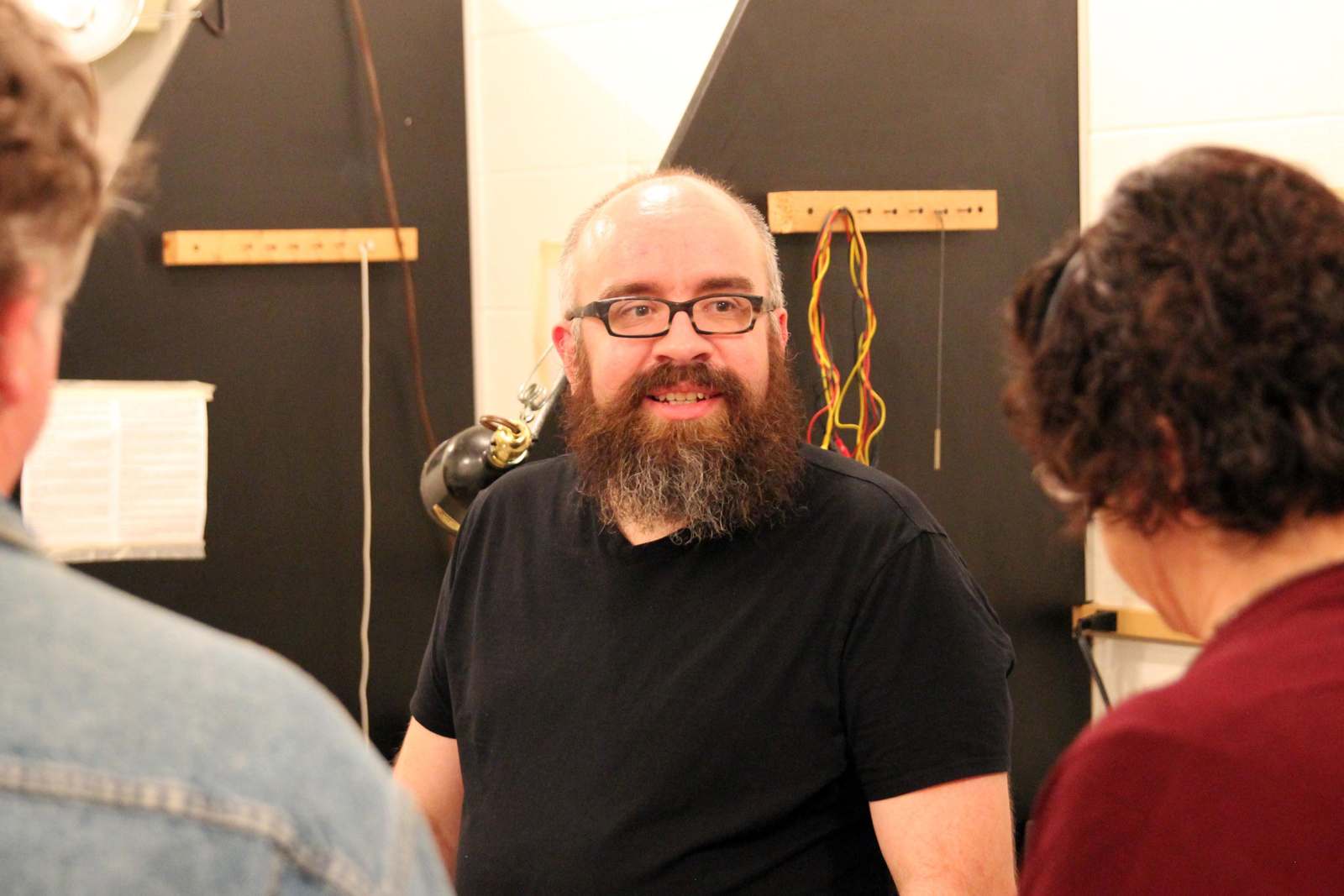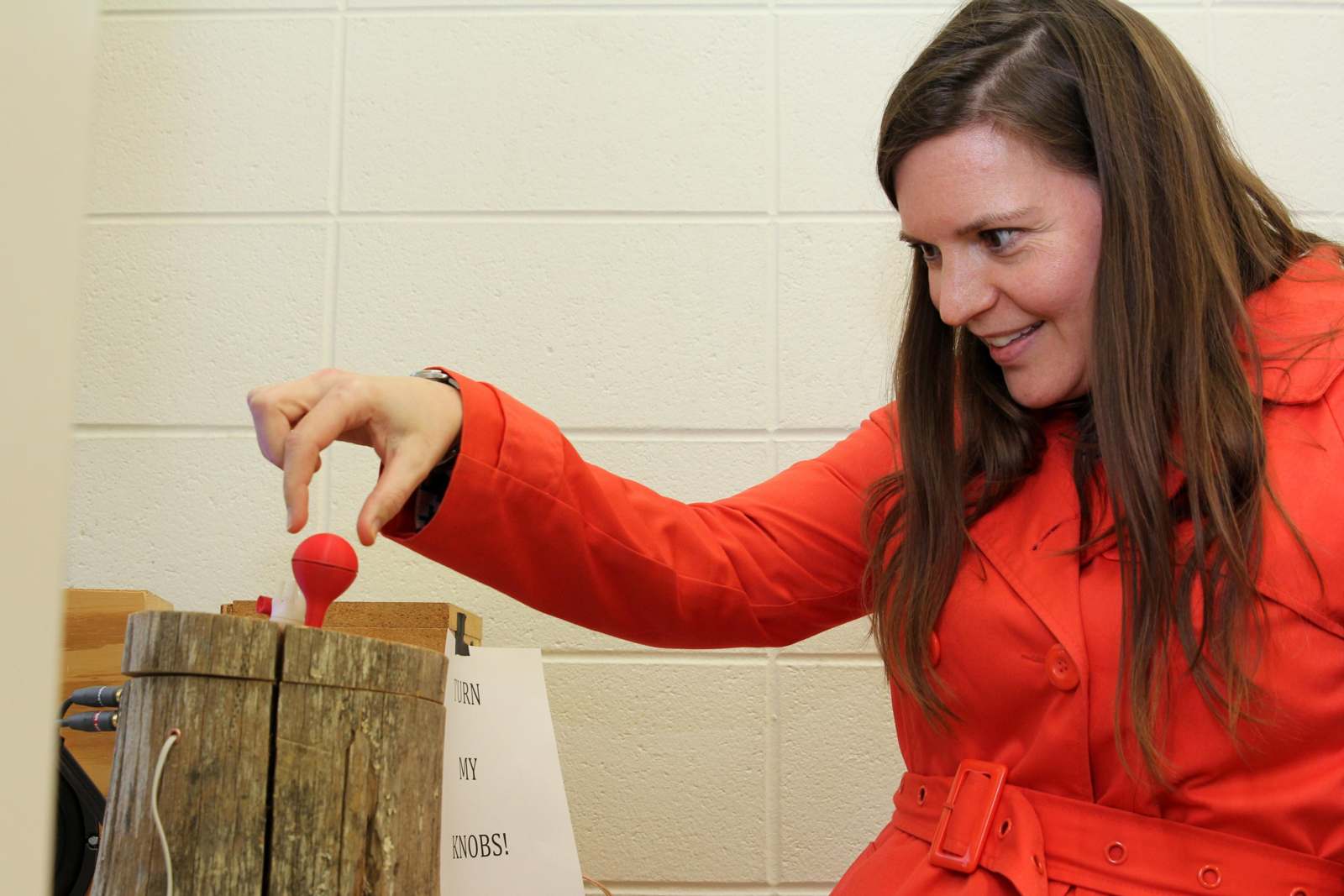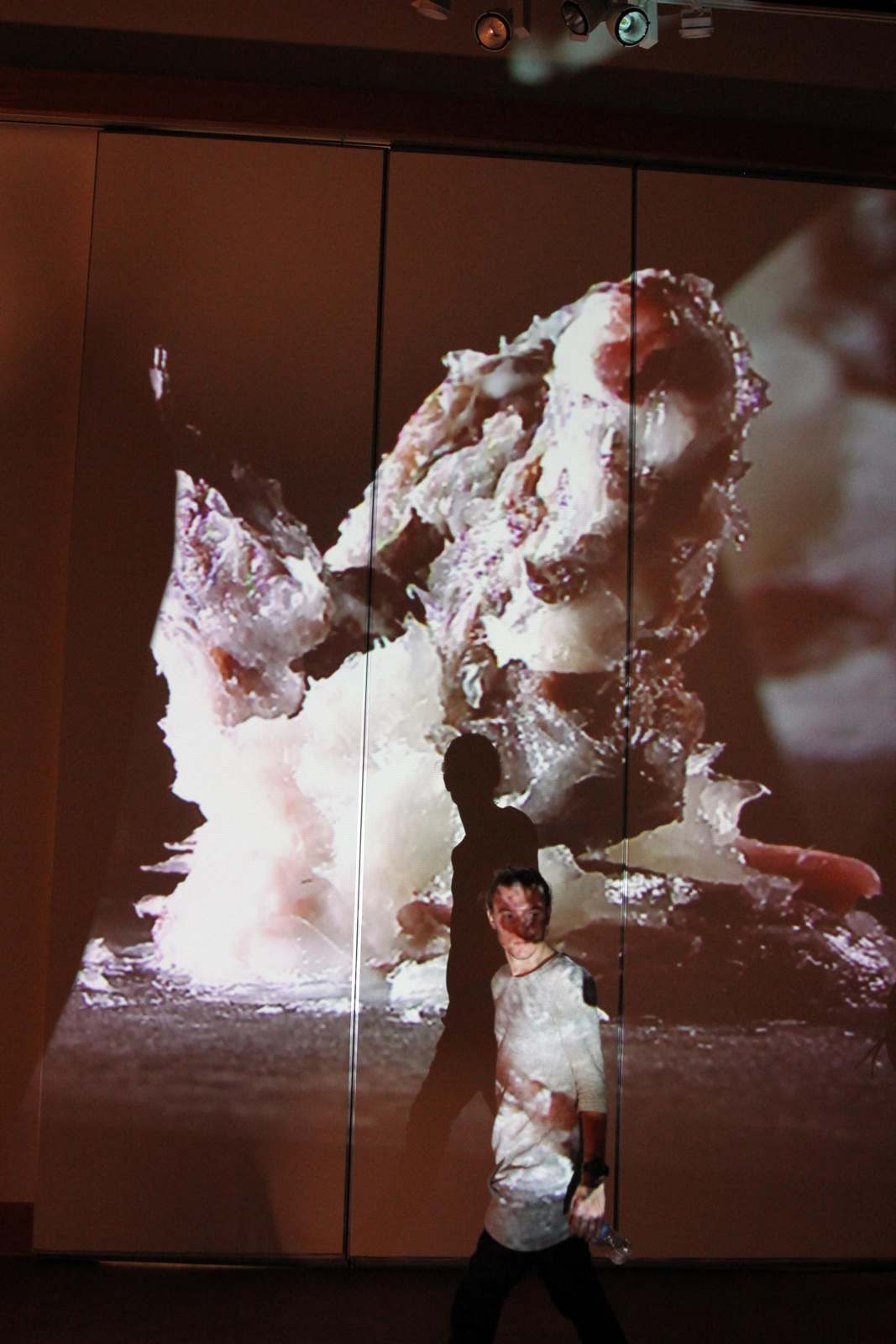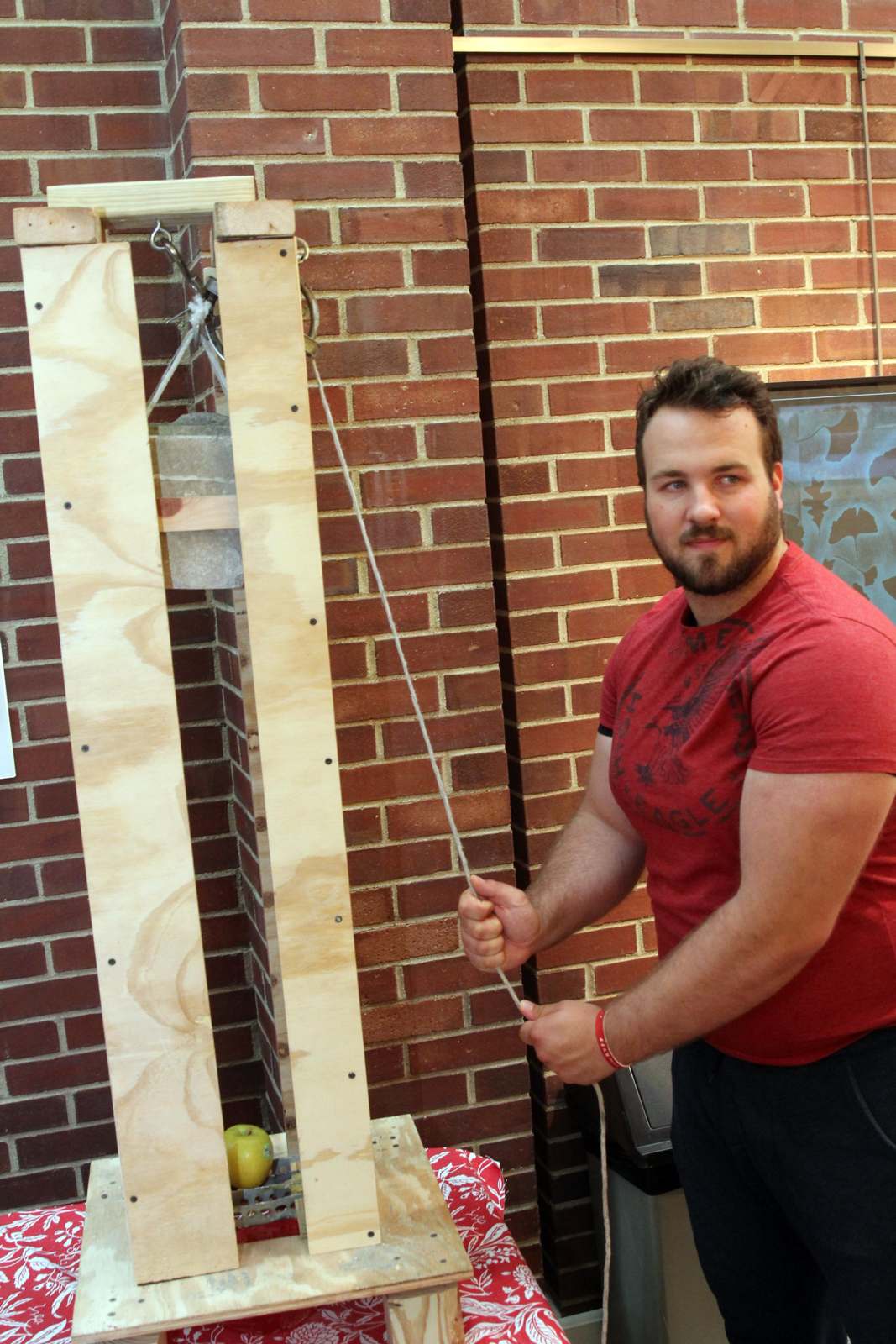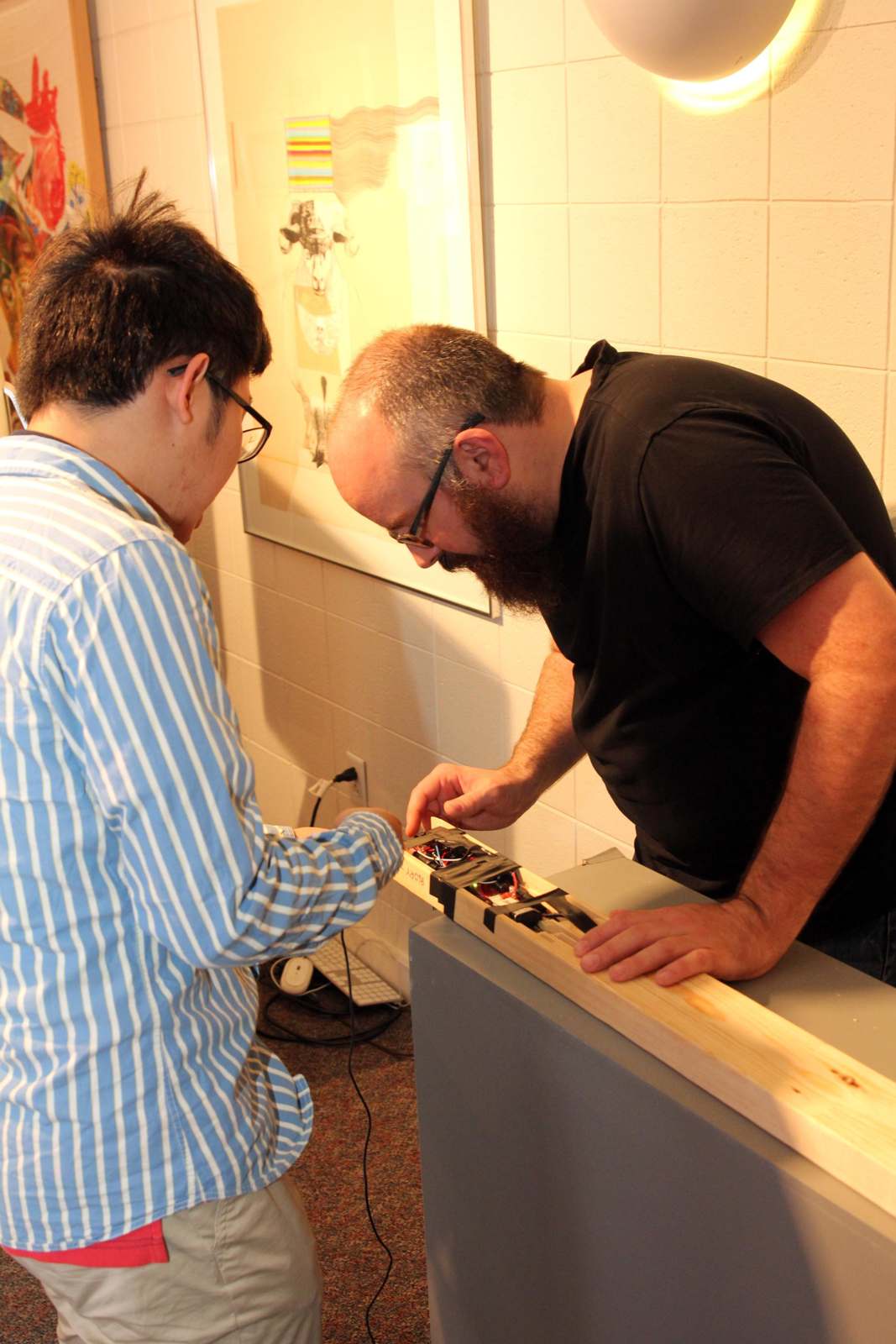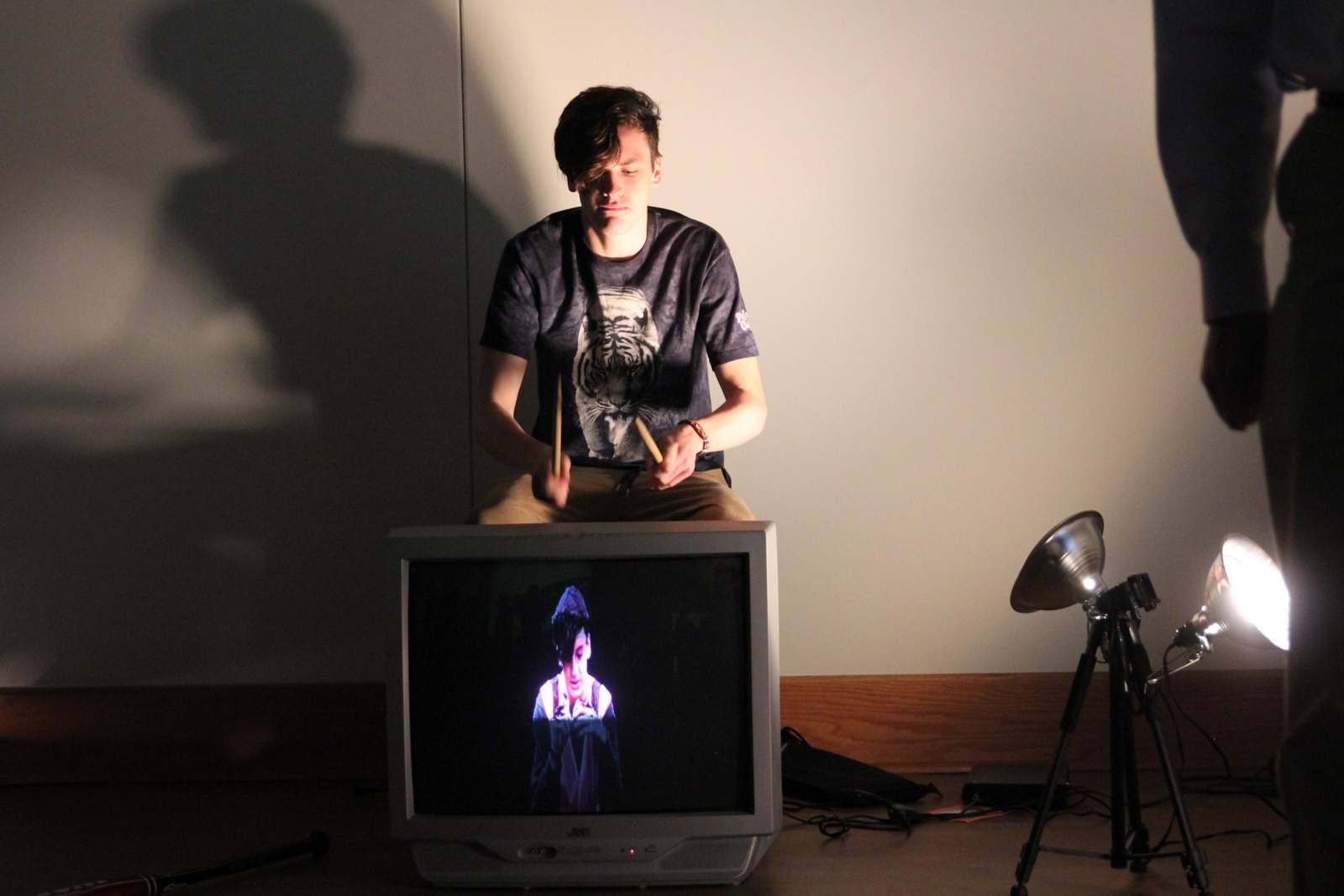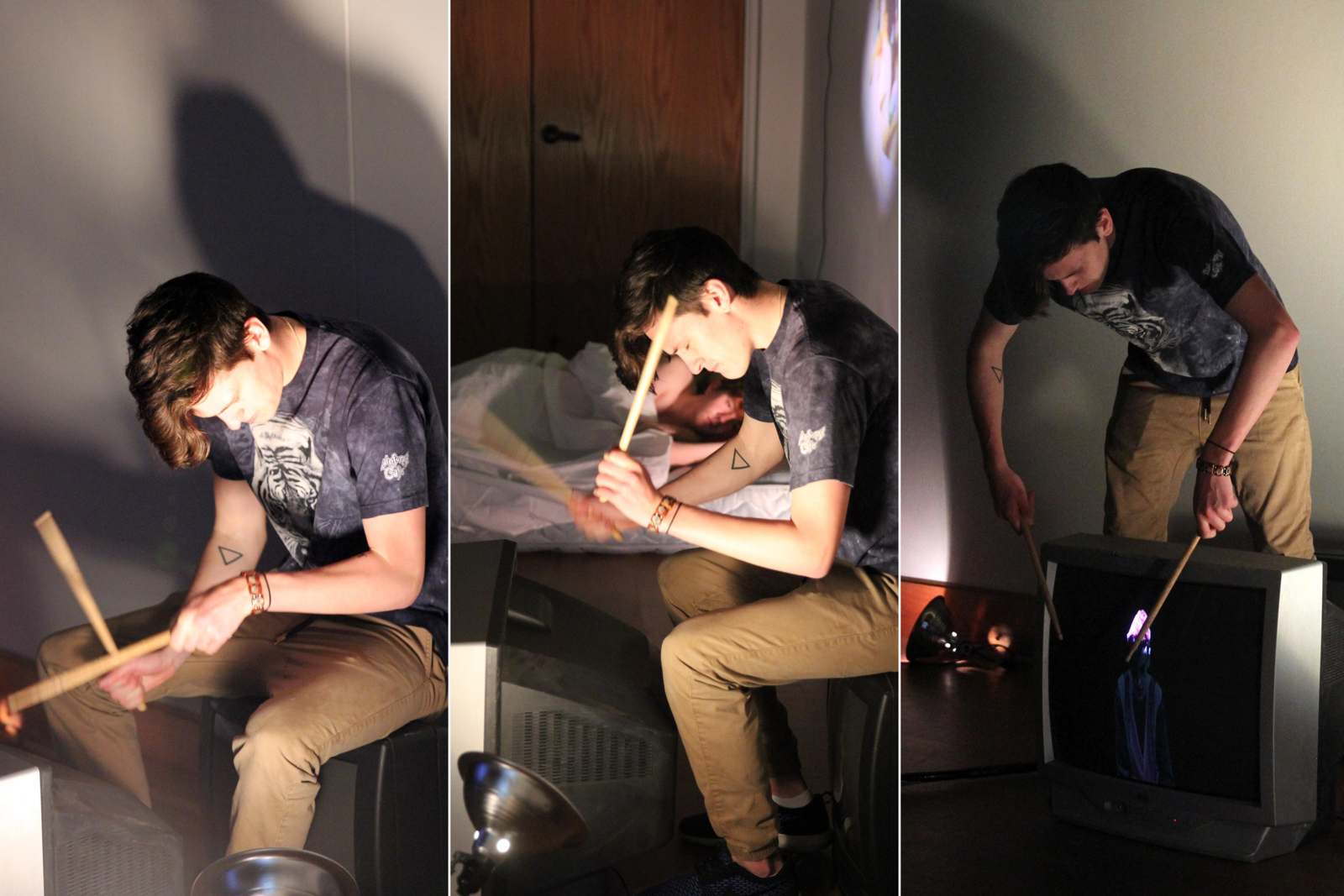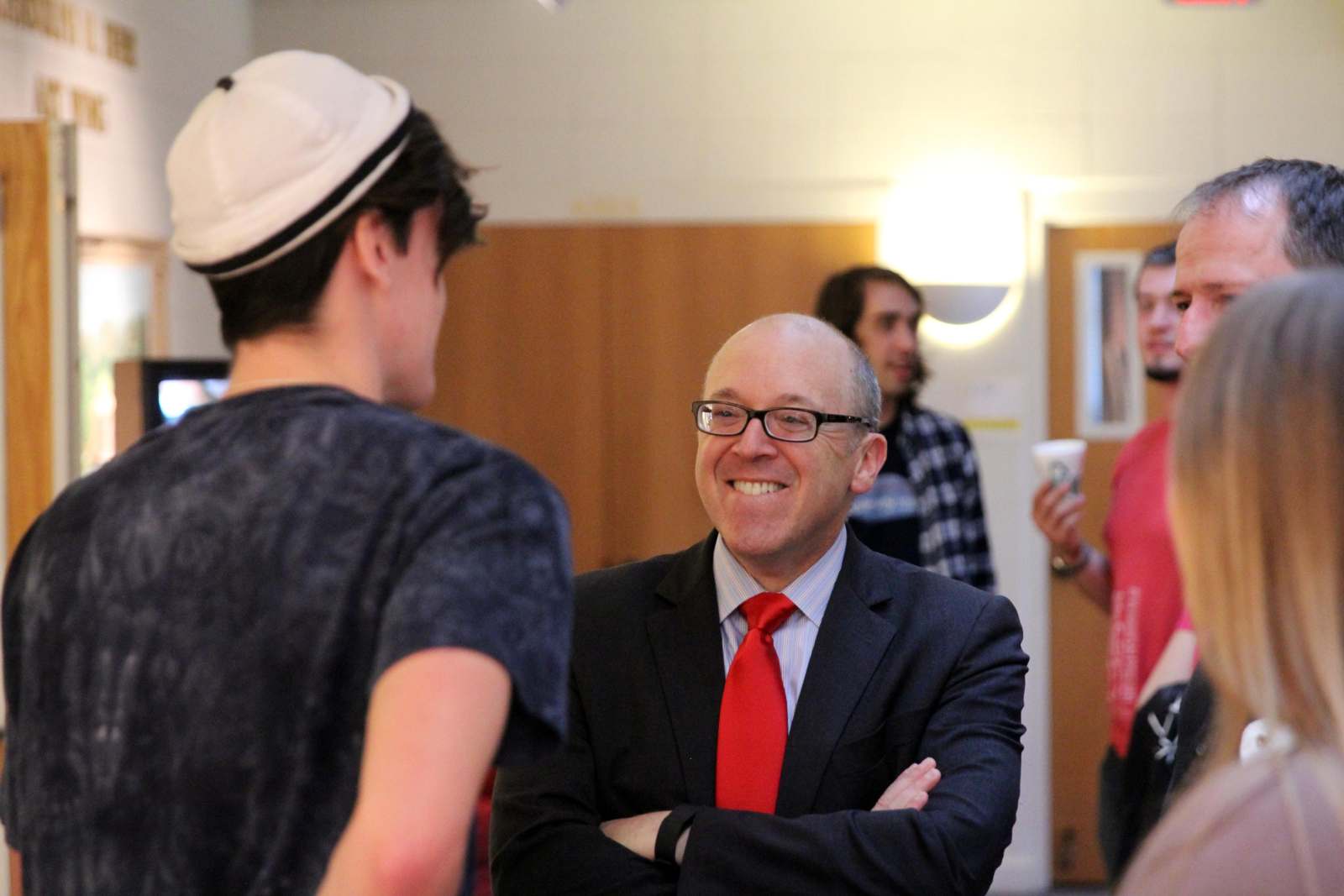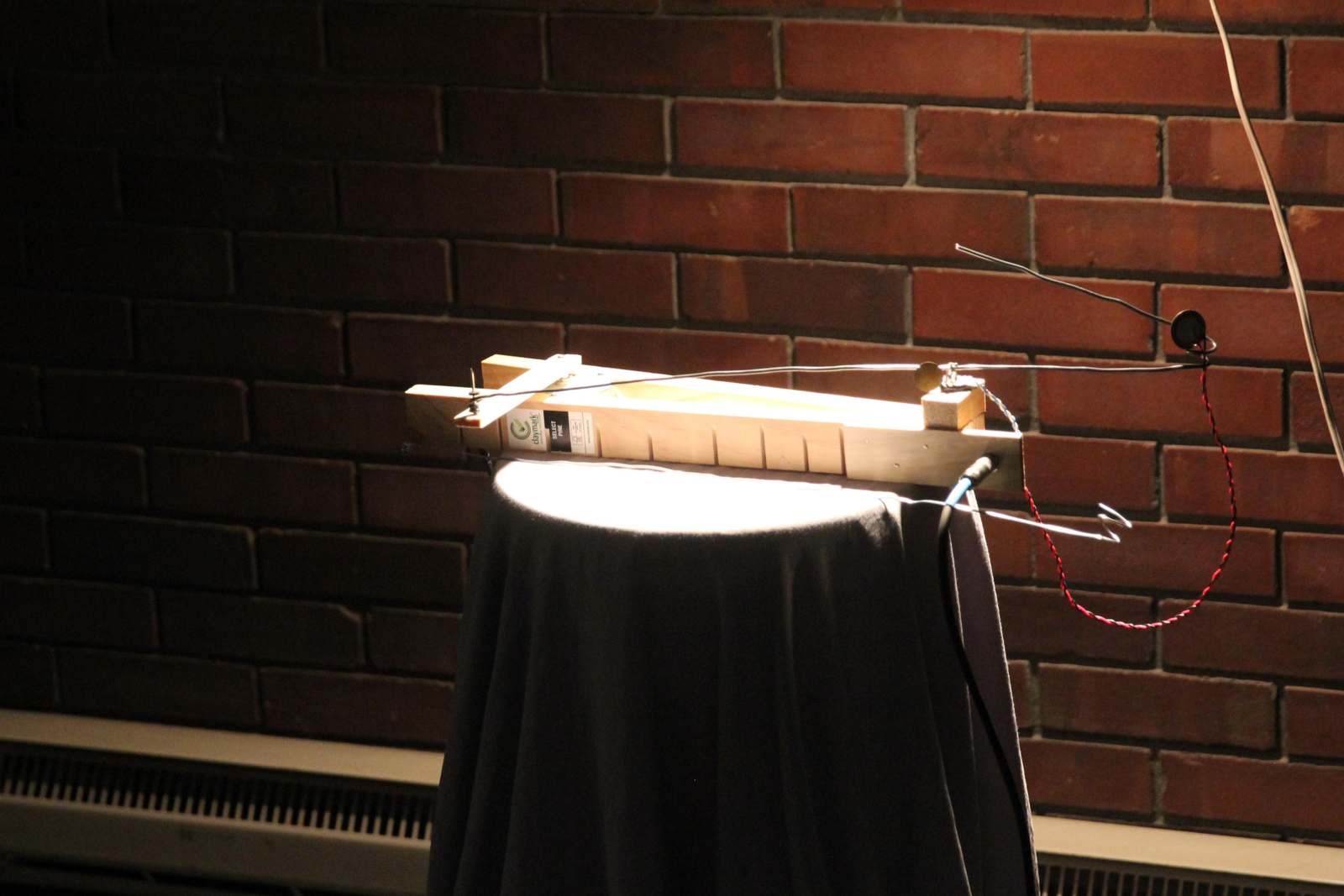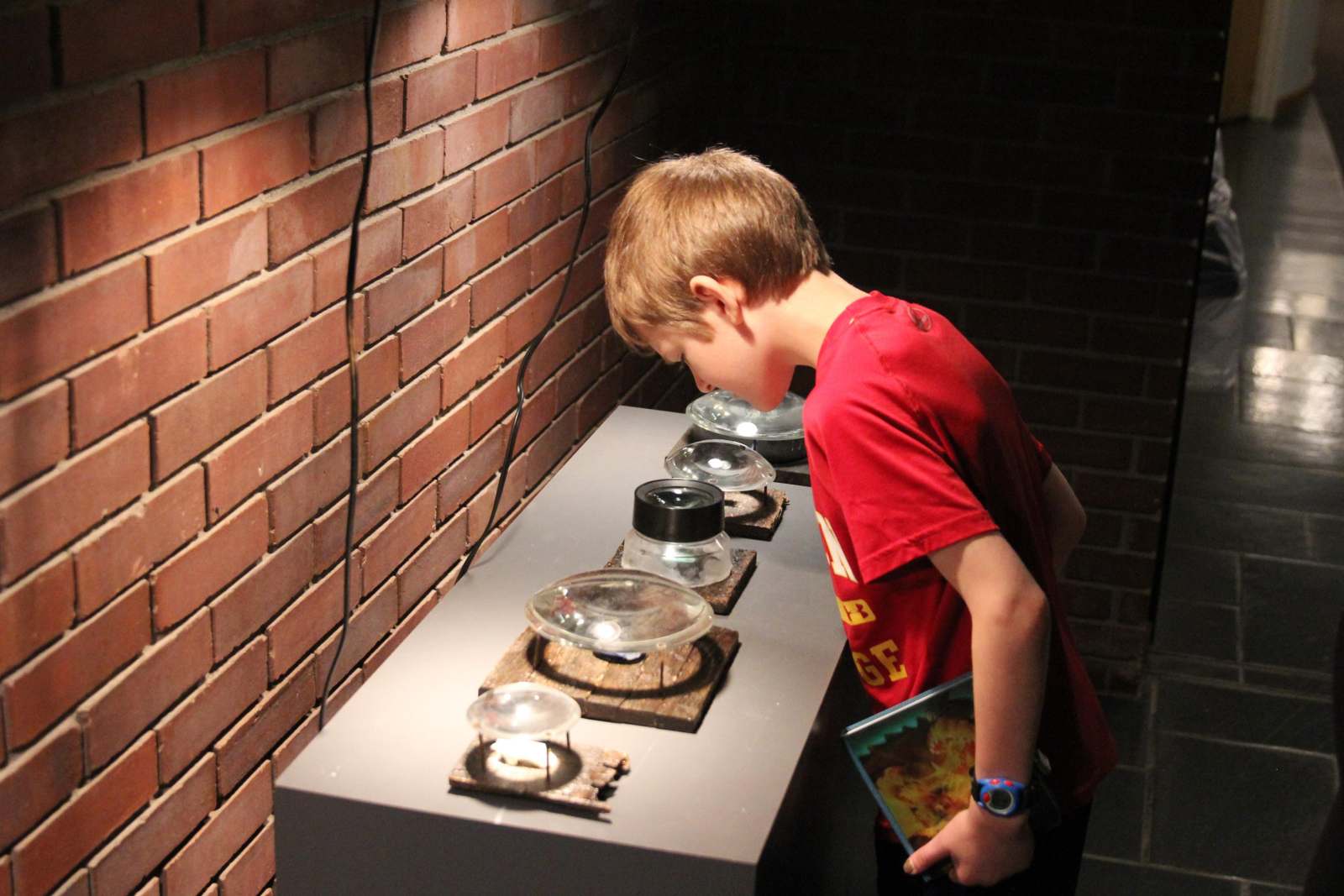Digital Arts in Action: Ghost in the Machine, 5/2/2016
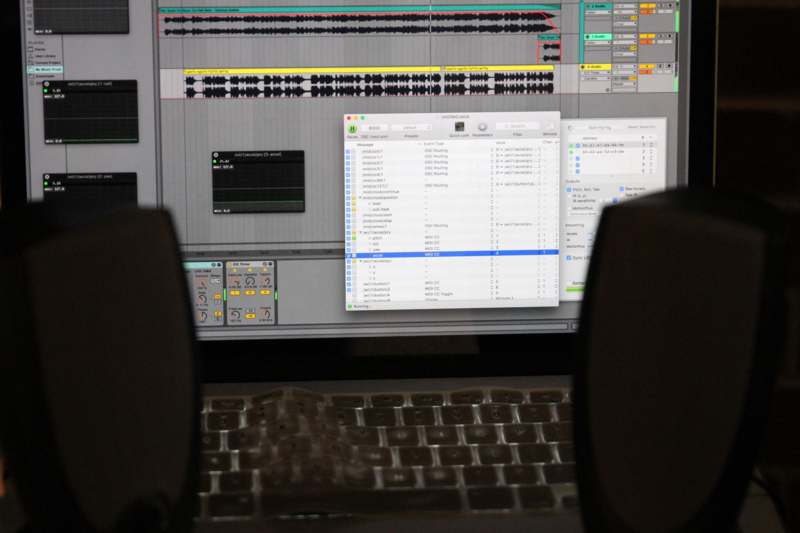
On May 2, the Fine Arts Center featured an exhibition for the 'Ghost in the Machine' class as part of the Liberal Arts Plus initiative. 'Ghost in the Machine' is a response to that digital push. 'We’ve created a maker space, but this class is about investigating technology that we use in our everyday lives and asking questions of it by making different things from it,' said Matthew Weedman, BKT Assistant Professor of Art. 'Reconstituting old technology, getting technology to do things it wasn’t made to do. We want to challenge our everyday conceptions.'
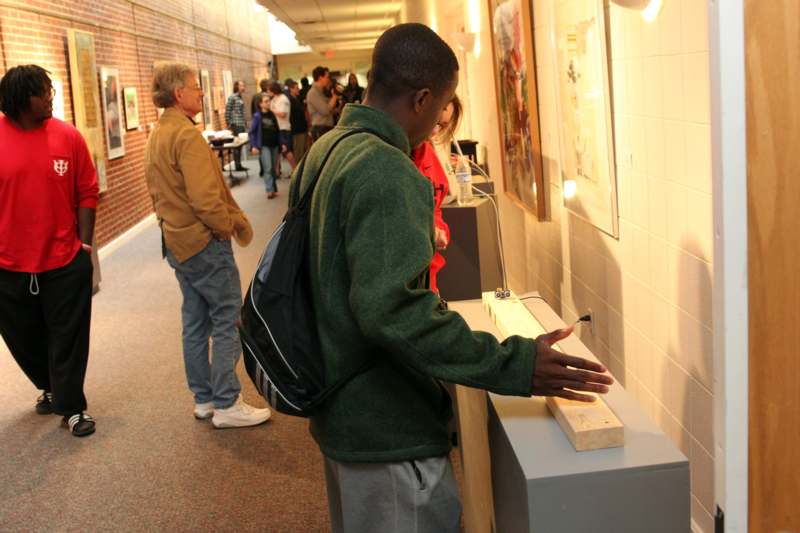
Rinne said of the class, 'Once someone had an idea, they either latched on to it, or they talked to other people and it grew and grew. Sometimes there were some subtractions from the initial grand plan, but it was rewarding to be able to work through that process with other people.' Here a student interacts with 'Musical 2x4' by Ngoc Tran '17.
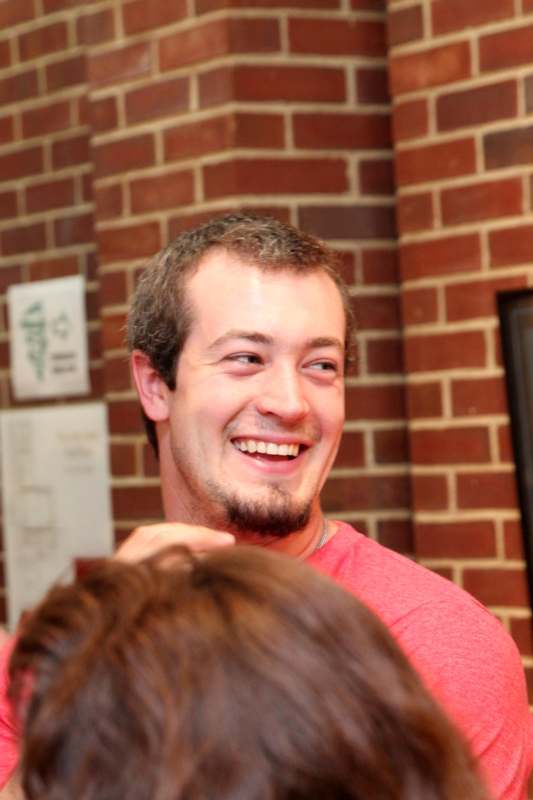
'It was a fun-sounding idea,' Daron said. 'I’ve always wanted to know if I could turn the bed of my truck into a pool. It’s phenomenal. With this class, it was difficult at the start to figure out how do it, but by the end we were letting our ideas fly. You have to figure out how to trust your instincts. That’s what you see here.'
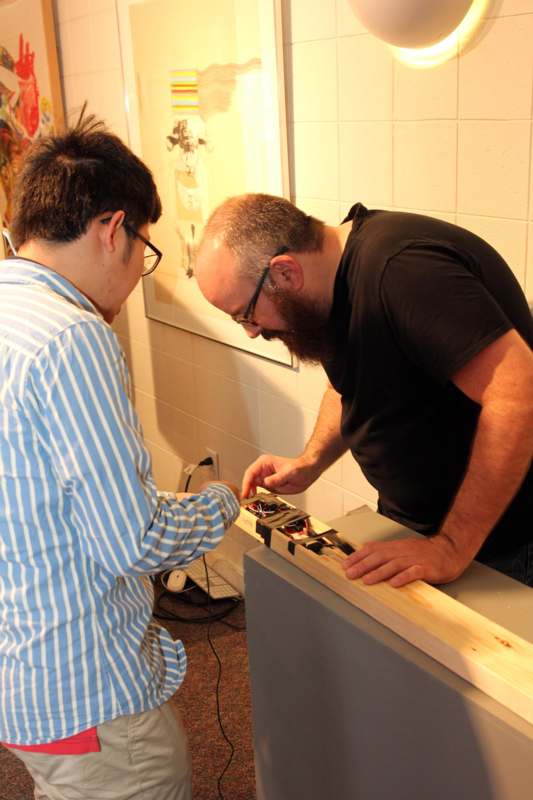
'The maker space brings in people who may be interested in technology, but it’s just part of what we're trying to do in the art department,' Weedman said. 'We’re not looking for people with amazing artistic ability, we’re looking for people who are interested in art and interested in the world, and we can teach them to use the tools of an artist to enrich the experience.'
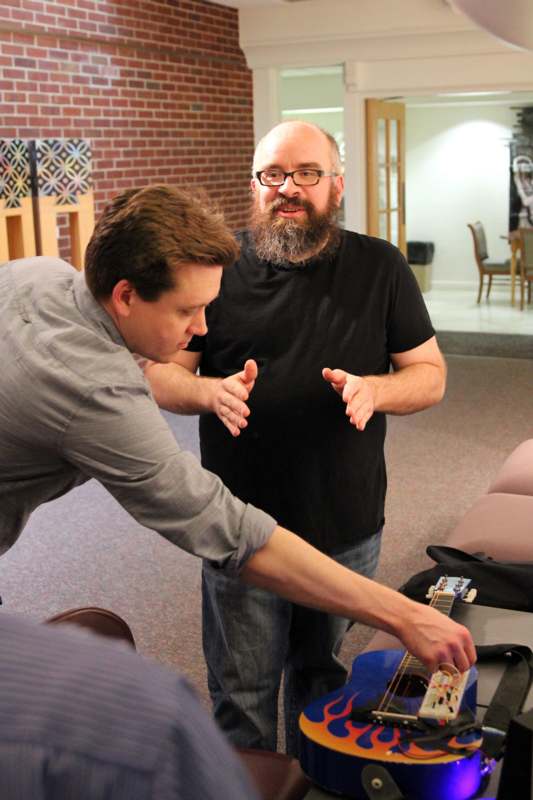
Said Weedman, pictured with Assistant Professor of Art Damon Mohl, of the Ghost in the Machine experience, 'What I’m most pleased with – and this has meant the most to me – is that these students who are not artists, necessarily, came in and made real art. There are concepts and maturity in ideas here that are gallery worthy. They just need some finishing touches. I’m shocked at their ability to rise to the conceptual needs of the class.'

